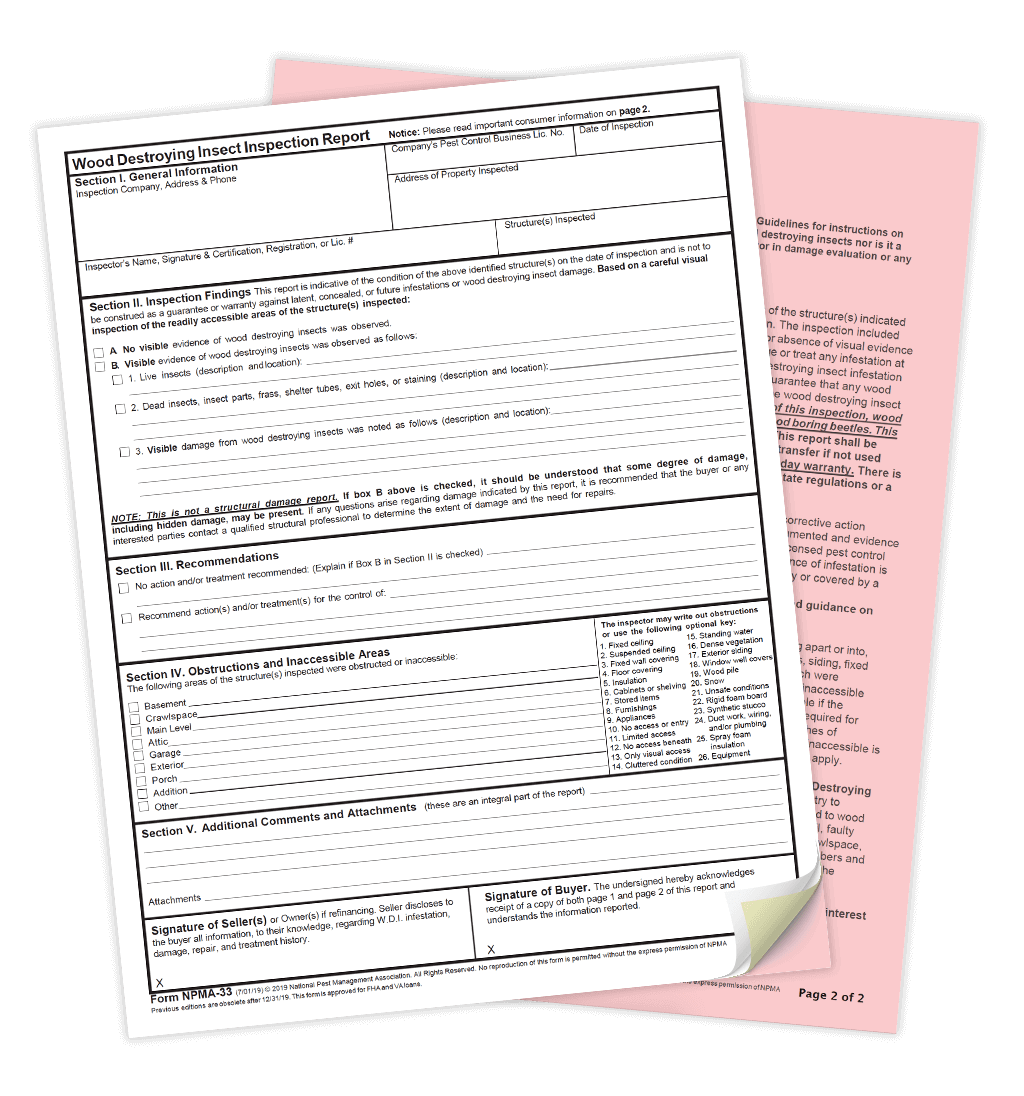Real Estate Pest Inspection Services
REAL ESTATE PEST INSPECTION SERVICES
When you’re buying or selling a New England home, inspections are crucial. Structurally sound, secure properties are worthy investments, but discovering serious pest issues after closing can transform a dream home into a nightmare. Home inspections inform buyers about needed repairs or replacements, but they don’t cover wood-destroying insect infestations or damage.
What is a Wood-Destroying Insect Report
Unlike a home inspection, a WDIR focuses on the presence of termites, carpenter ants, carpenter bees, and wood-boring beetles as well as any damage they’ve caused. To complete these reports, a certified inspector examines all accessible areas of the building to find evidence of wood-destroying insects.
For some lenders, a WDIR is a requirement in the residential buying or selling process. Professional home inspectors concerned about insect damage may also request a report, and homebuyers who want more peace of mind can ask for one, too.
Get a WDIR Report
For some lenders, a WDIR is a requirement in the residential buying or selling process. Professional home inspectors concerned about insect damage may also request a report, and homebuyers who want more peace of mind can ask for one, too.

What Does a Waltham Pest Services WDIR Look Like
When conducting a real estate pest inspection, certified Waltham technicians examine the interior and exterior parts of a home for evidence of wood-destroying pests. The completed WDIR includes written descriptions and photographs that focus on the following categories:
- Damage: Includes visual evidence of carpenter ant frass, pest entry holes, and other signs of damage. Technicians may probe wood supports to test for termite galleries, but they do not cut into drywall or inspect other concealed areas to look for additional problems.
- Insects: Describes all sightings of live WDIs, carcasses, cast-off skins, discarded wings, droppings, termite mud tubes, and other evidence.
- Past Treatment: Lists any bait traps, drilled holes, and additional indications of previous pest control treatments discovered on the property.
- Vulnerable Areas: Records moisture, areas with improper drainage, and points of contact between the soil and wood or foam insulation.
- Blocked Areas: Discloses any parts of the building the inspector deems inaccessible. May include crawl spaces too narrow to navigate, areas that are too high to reach, or physically obstructed parts of a house.
- Recommendations: Offers advice on treatment to combat current WDI issues or prevent future problems.
WHY WALTHAM?
Some professional home inspectors include WDIRs along with their services. However, without specialized wood destroying insect knowledge, subtle signs of infestation and damage can go unnoticed. Western Pest Services offers licensed, professional real estate pest control inspections, in addition to related pest control treatments, to give you peace of mind before buying or selling a home.
What Is Part of a WDIR?
While WDIRs are a crucial part of the home-buying process, they can only inform realtors and potential property owners about the building’s current state of wood destroying pest infestation and damage. Reports are valid for 90 days from the date of inspection and are not a warranty. Also, WDIRs concentrate solely on pests that cause structural damage, so they don’t include information about rodent issues or insects like cockroaches and bed bugs.
- Live Insects: Includes sightings of live wood destroying insects, discarded wings from swarmers, or active Eastern subterranean termite mud tubes
- Dead Insects: Notes findings of WDI carcasses, either whole or in part
- Visible Damage: Describes evidence of entry holes, a blistered or bubbled look on painted surfaces, hollow-sounding timber, and wood that crumbles due to gentle probing, among other signs
- Evidence of Prior Treatment: Explains any proof of prior pest control efforts
- Vulnerable Conditions: Specifies areas where wood or foam insulation touches soil, excessive moisture, improper drainage, and other potential problems
- Inaccessible Areas: Designates obstructed or physically inaccessible parts of the home excluded from the inspection
- Treatment Recommendations: Suggests measures needed to solve WDI problems in the home
What Isn’t Part of a WDIR?
While WDIRs are a crucial part of the home-buying process, they can only inform realtors and potential property owners about the building’s current state of wood destroying pest infestation and damage. Reports are valid for 90 days from the date of inspection and are not a warranty. Also, WDIRs concentrate solely on pests that cause structural damage, so they don’t include information about rodent issues or insects like cockroaches and bed bugs.
Get peace of mind today.
Get Started
